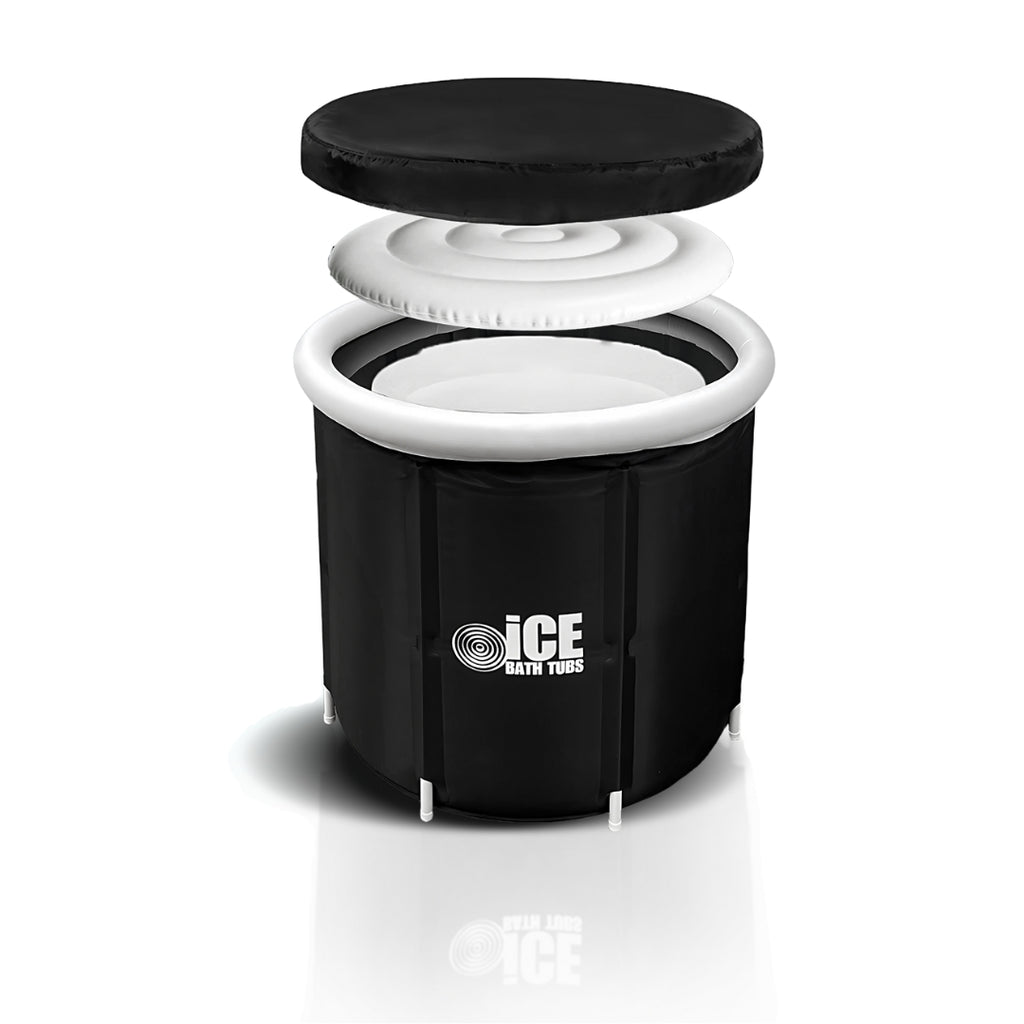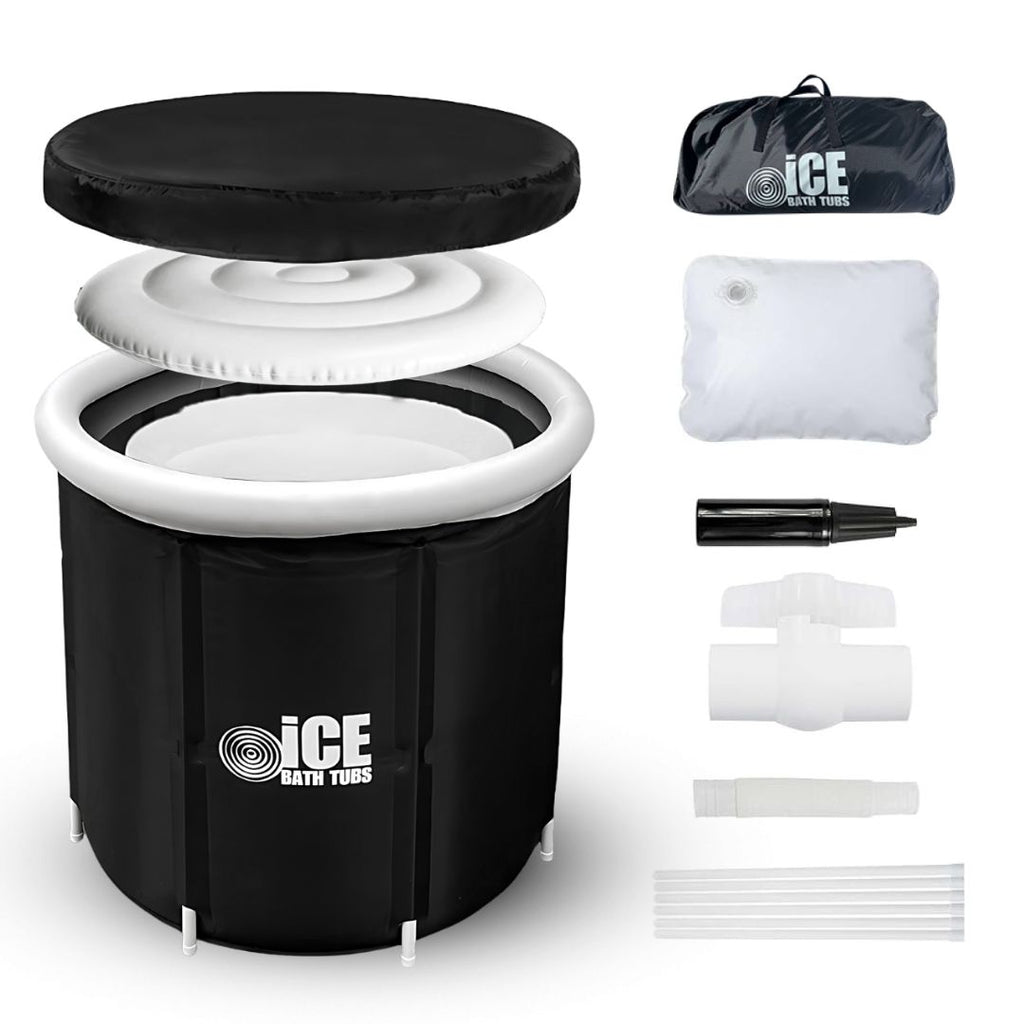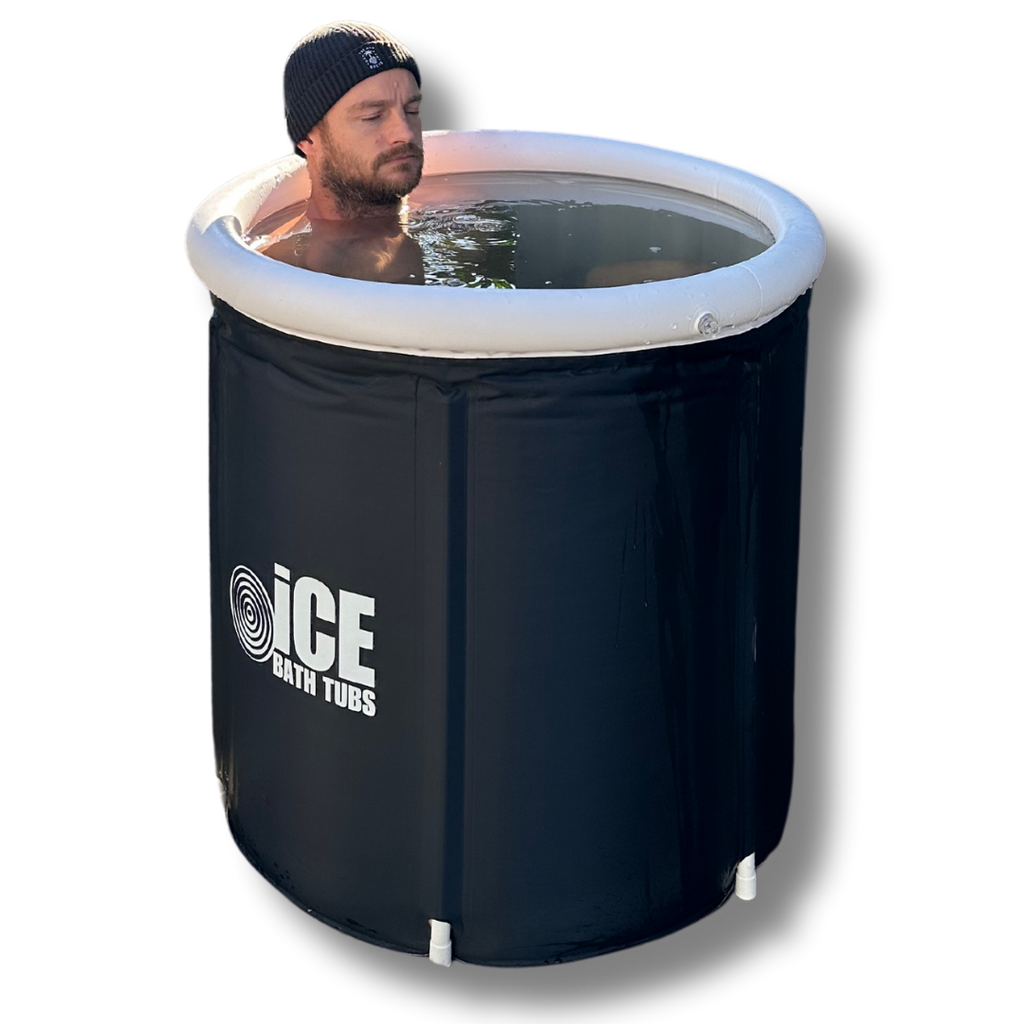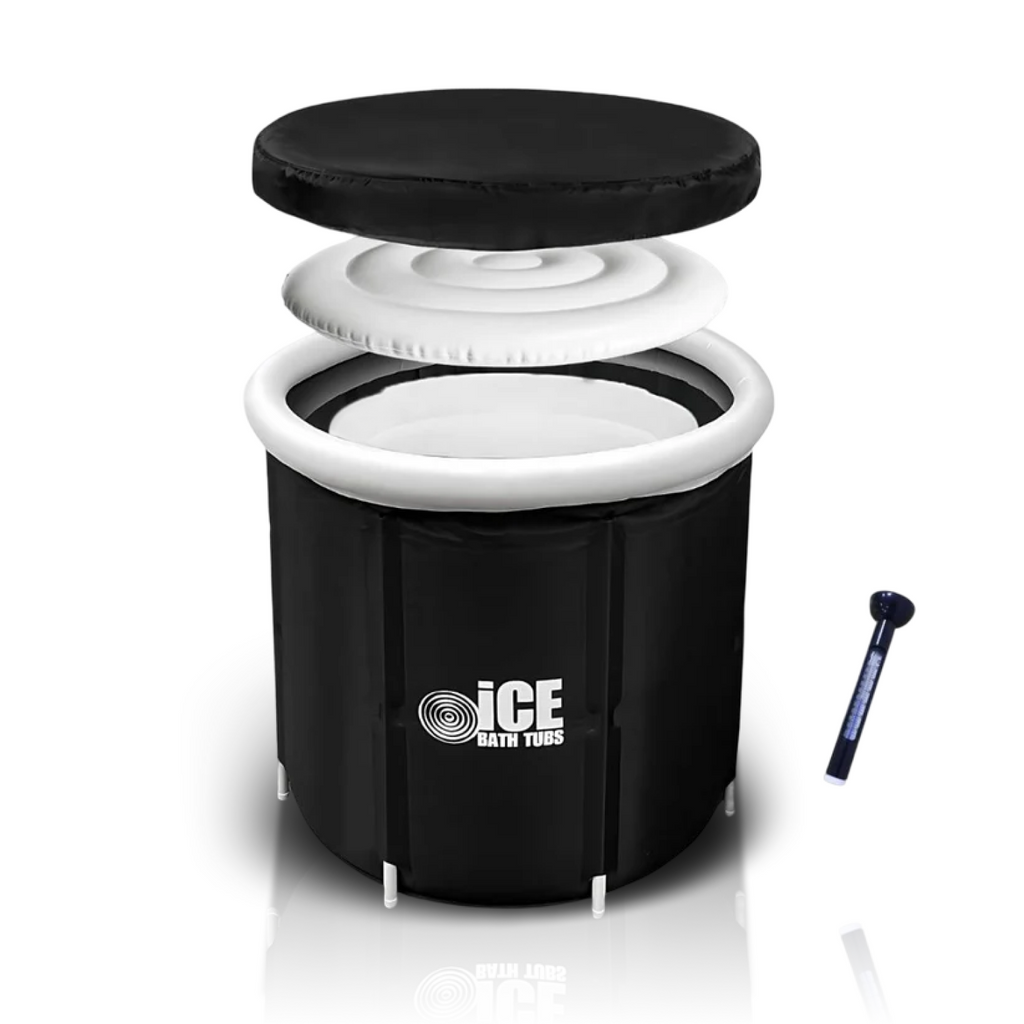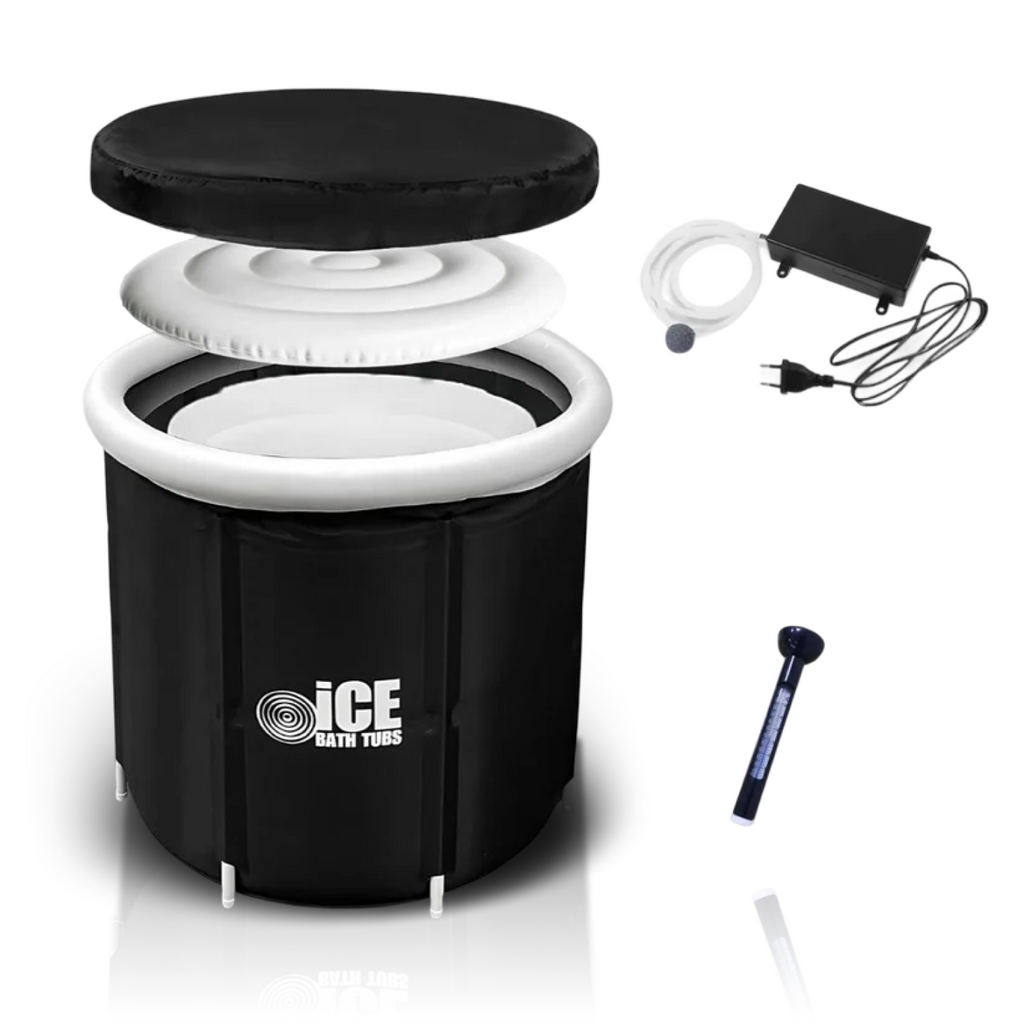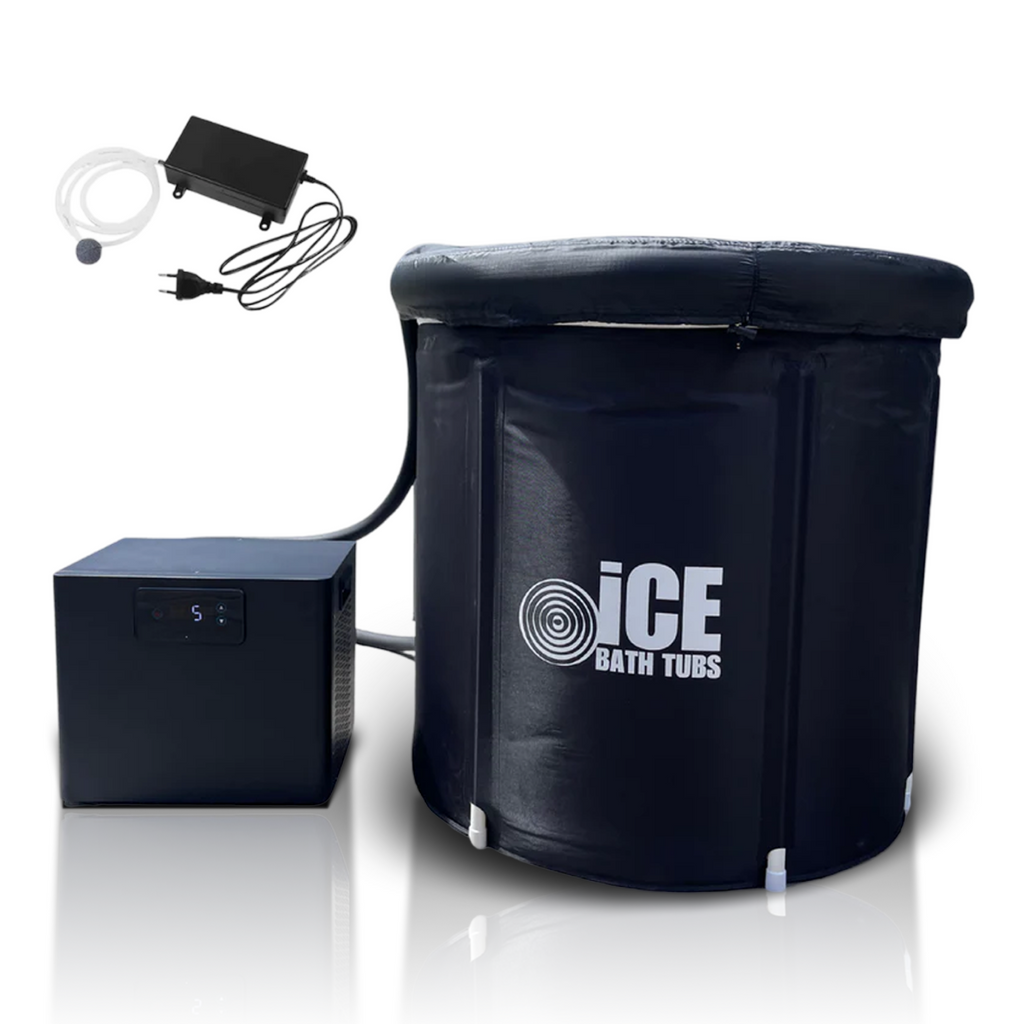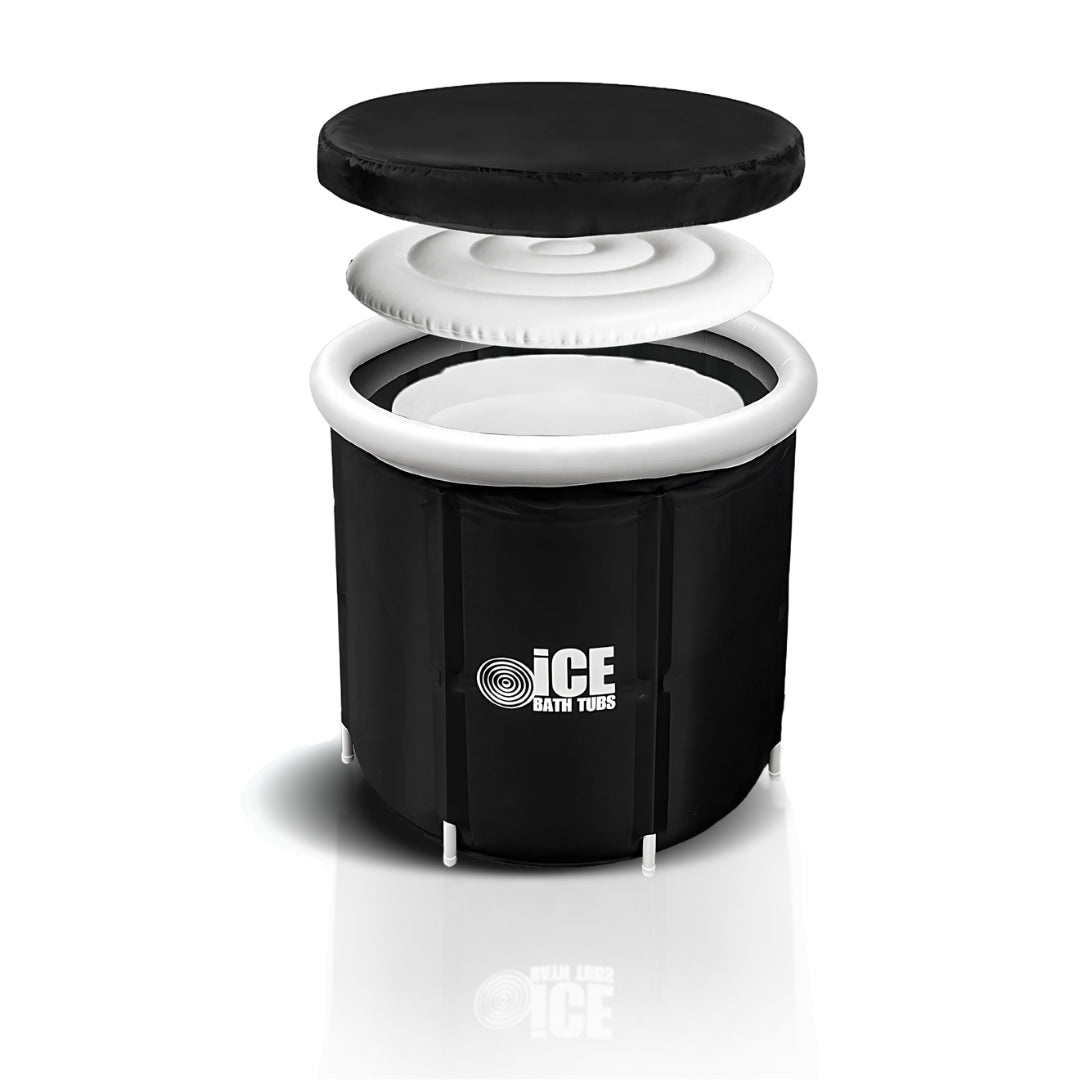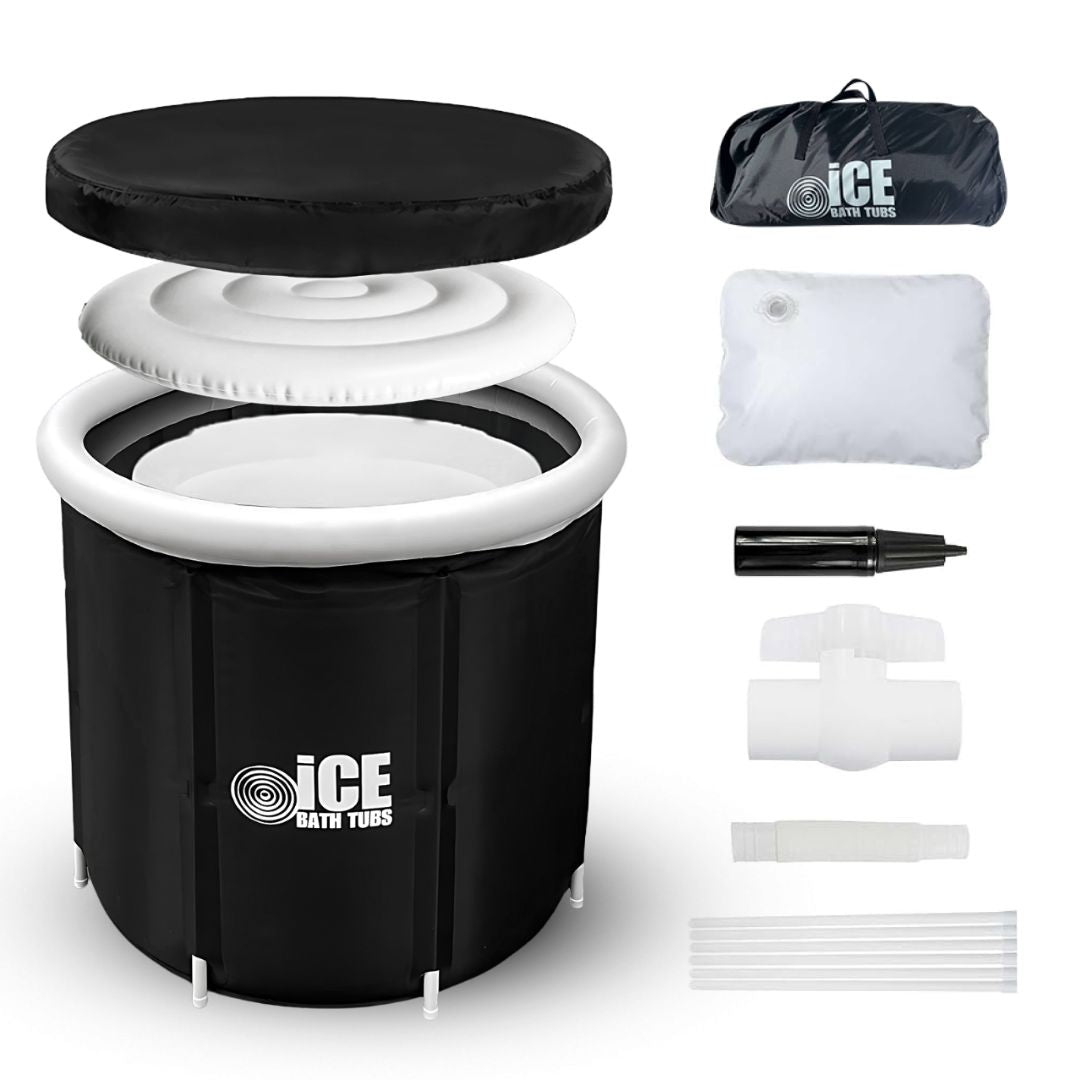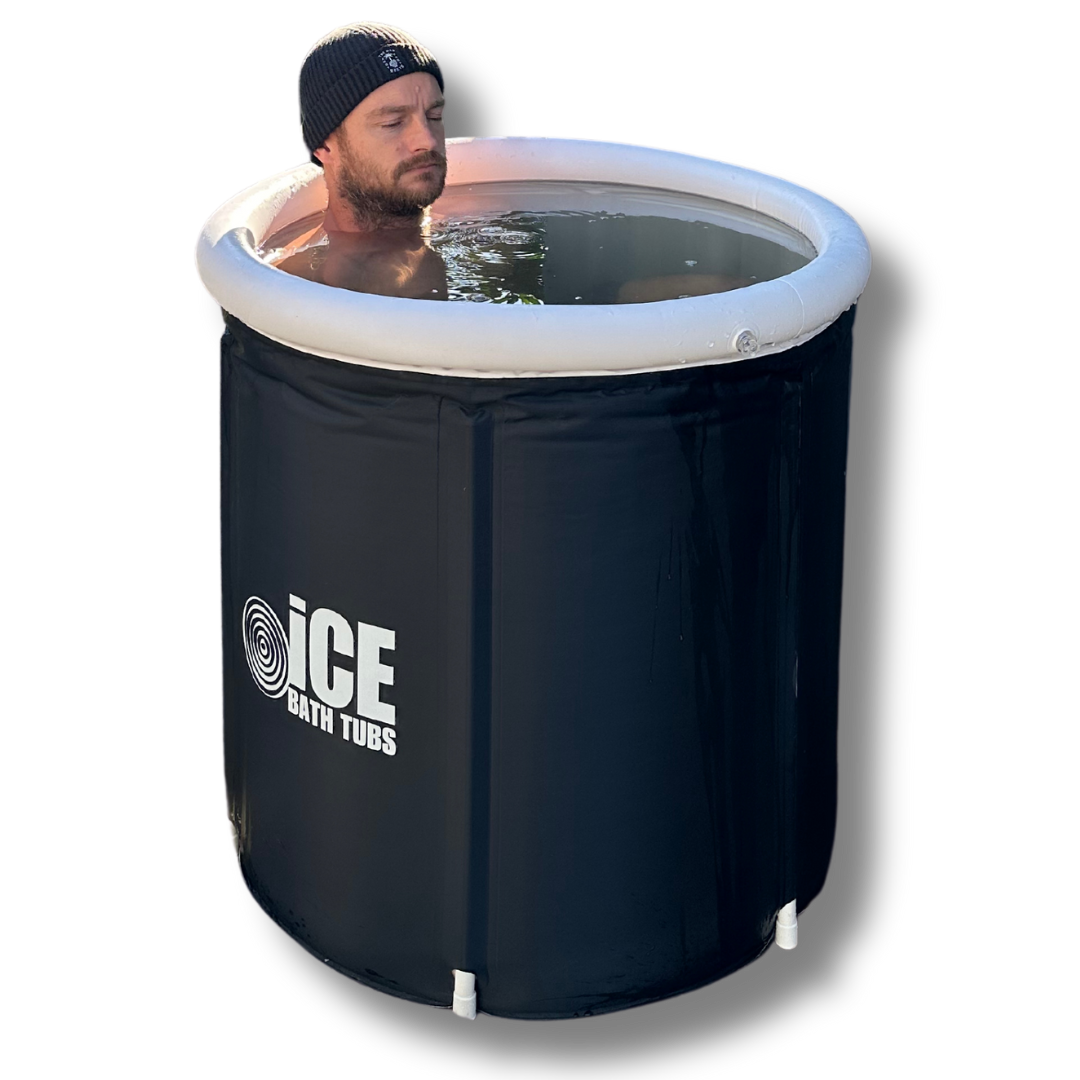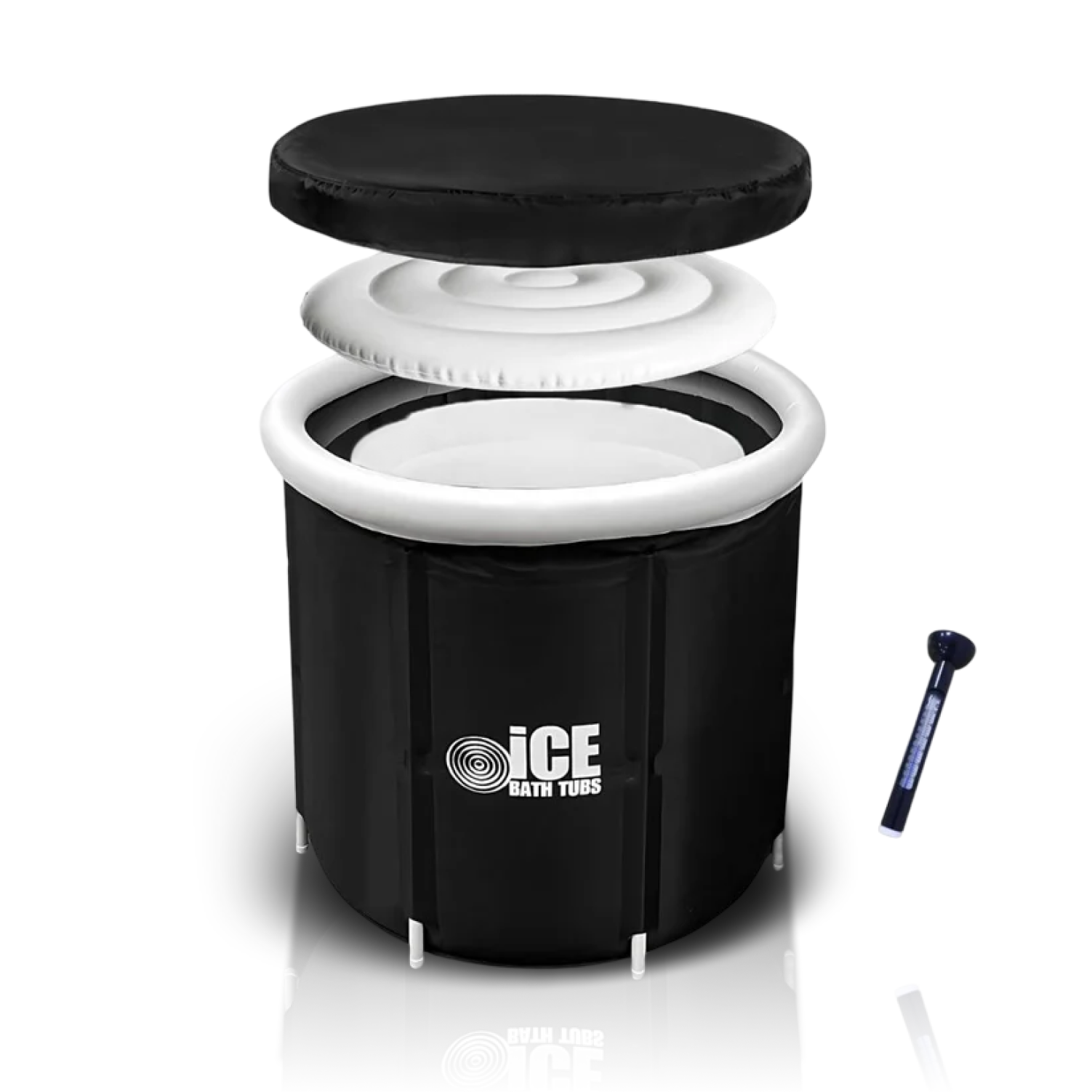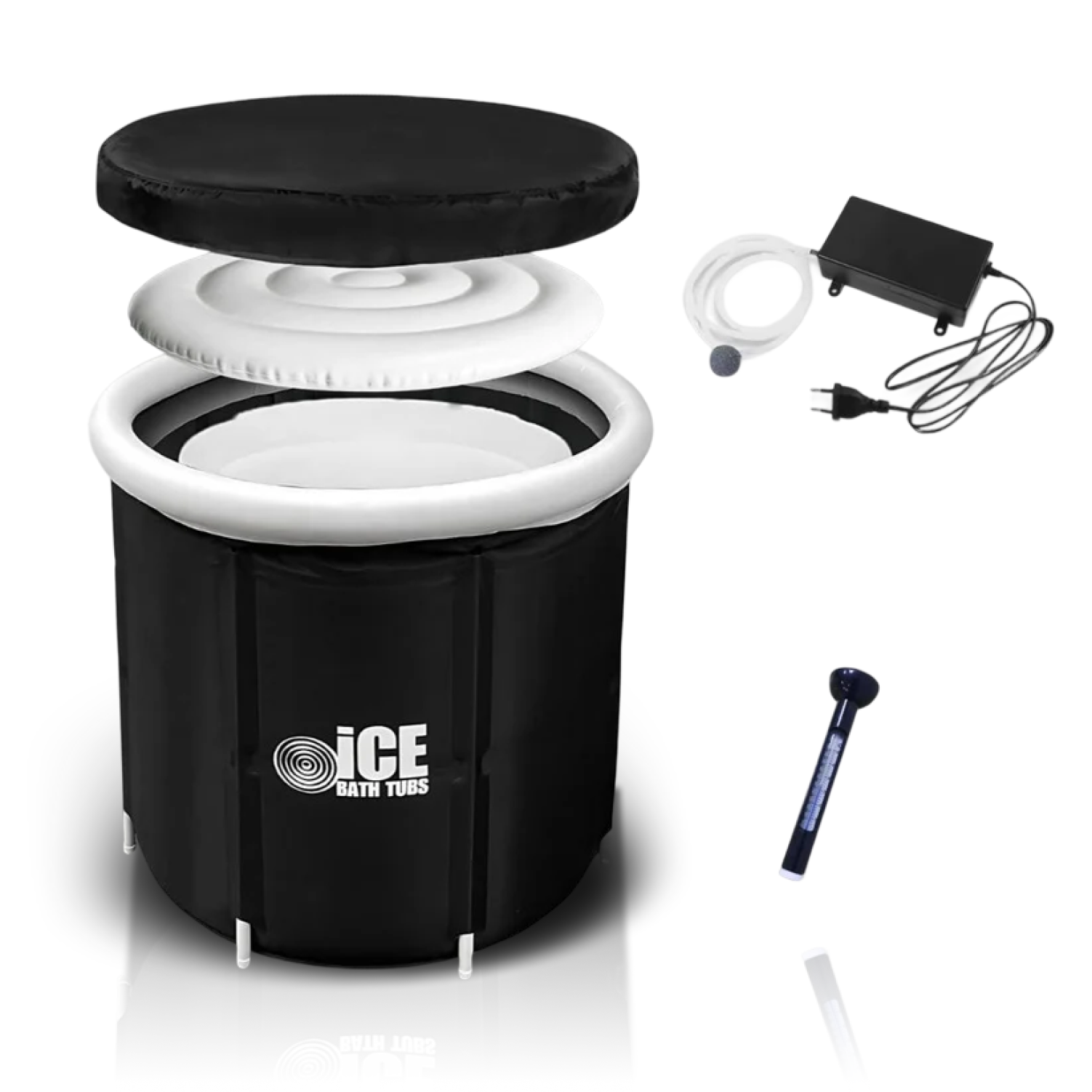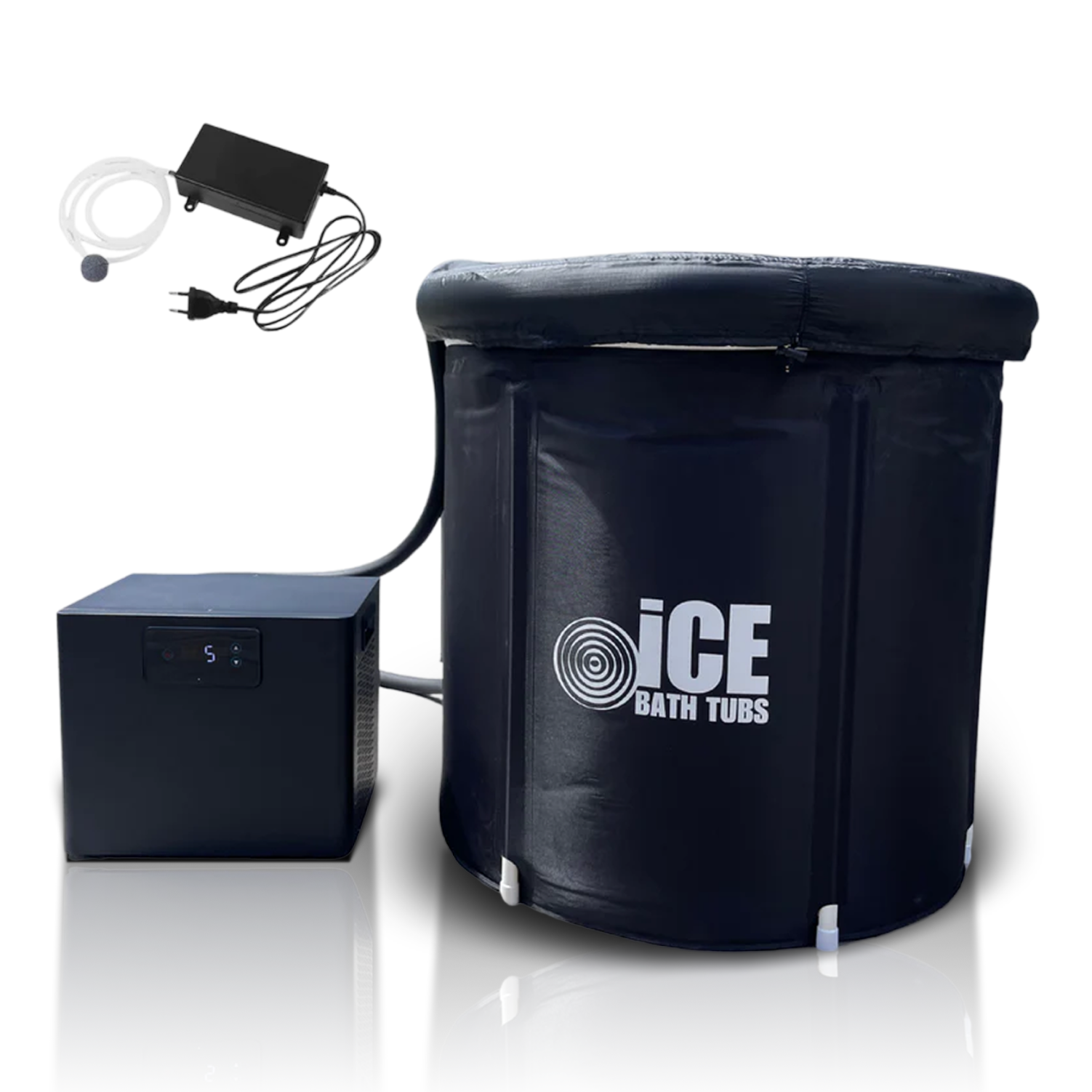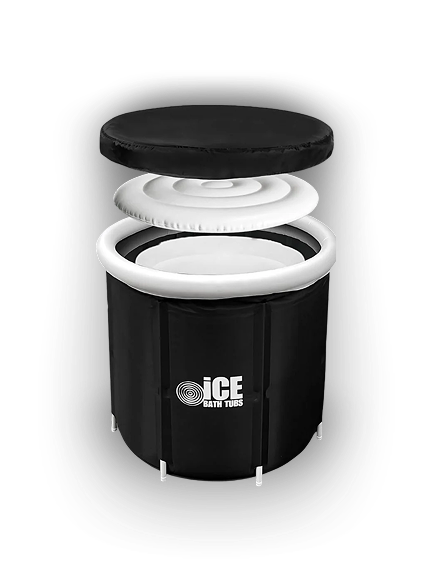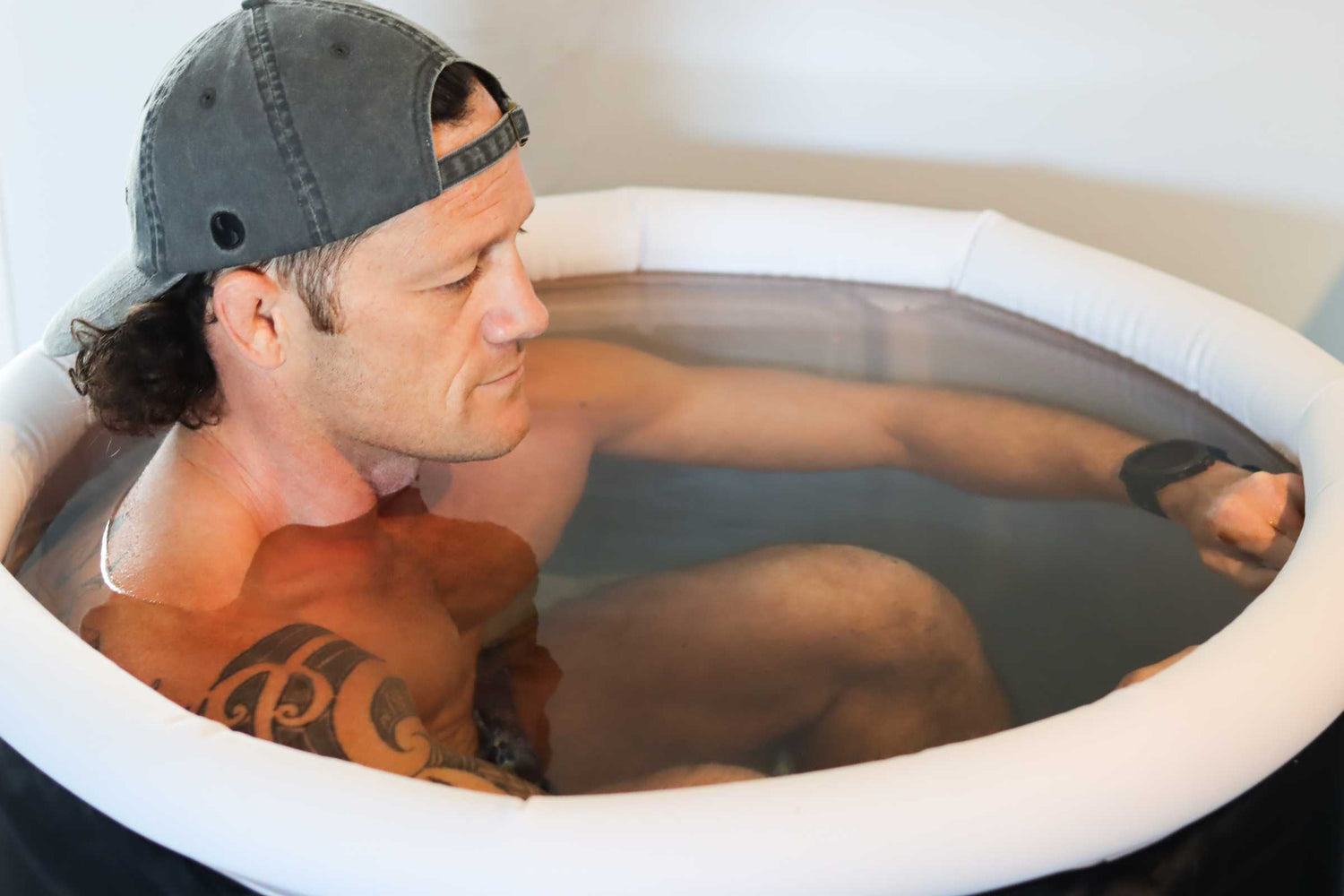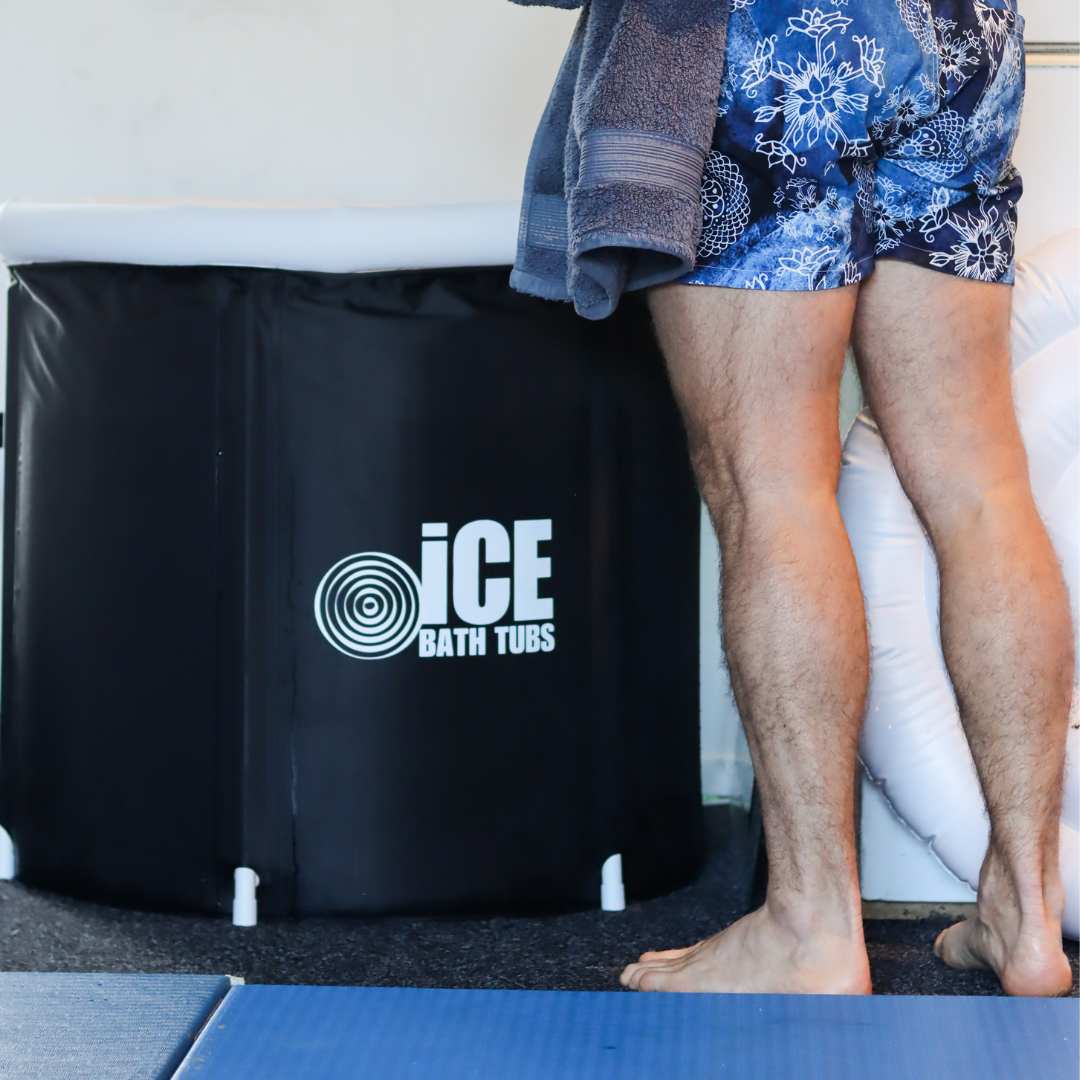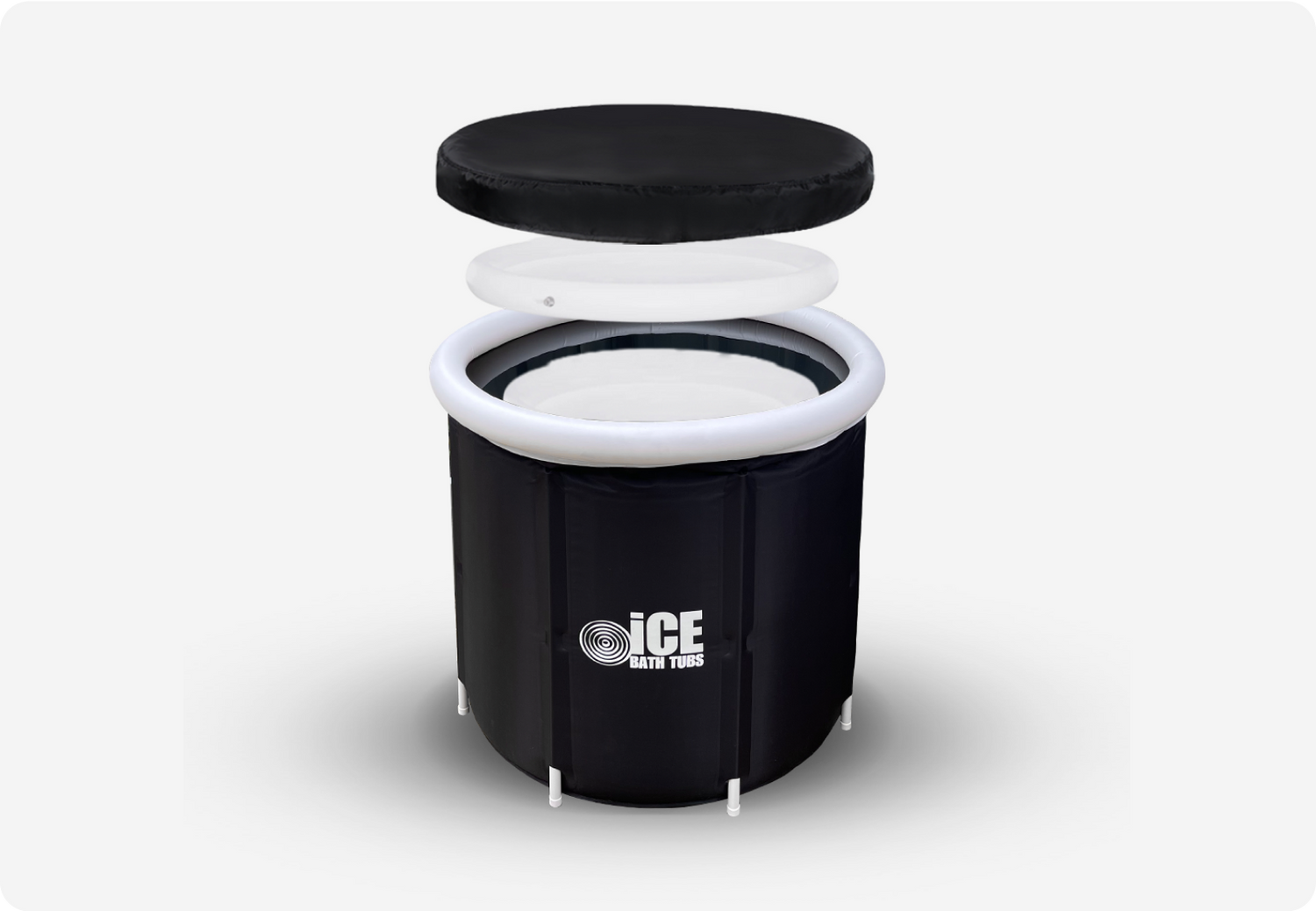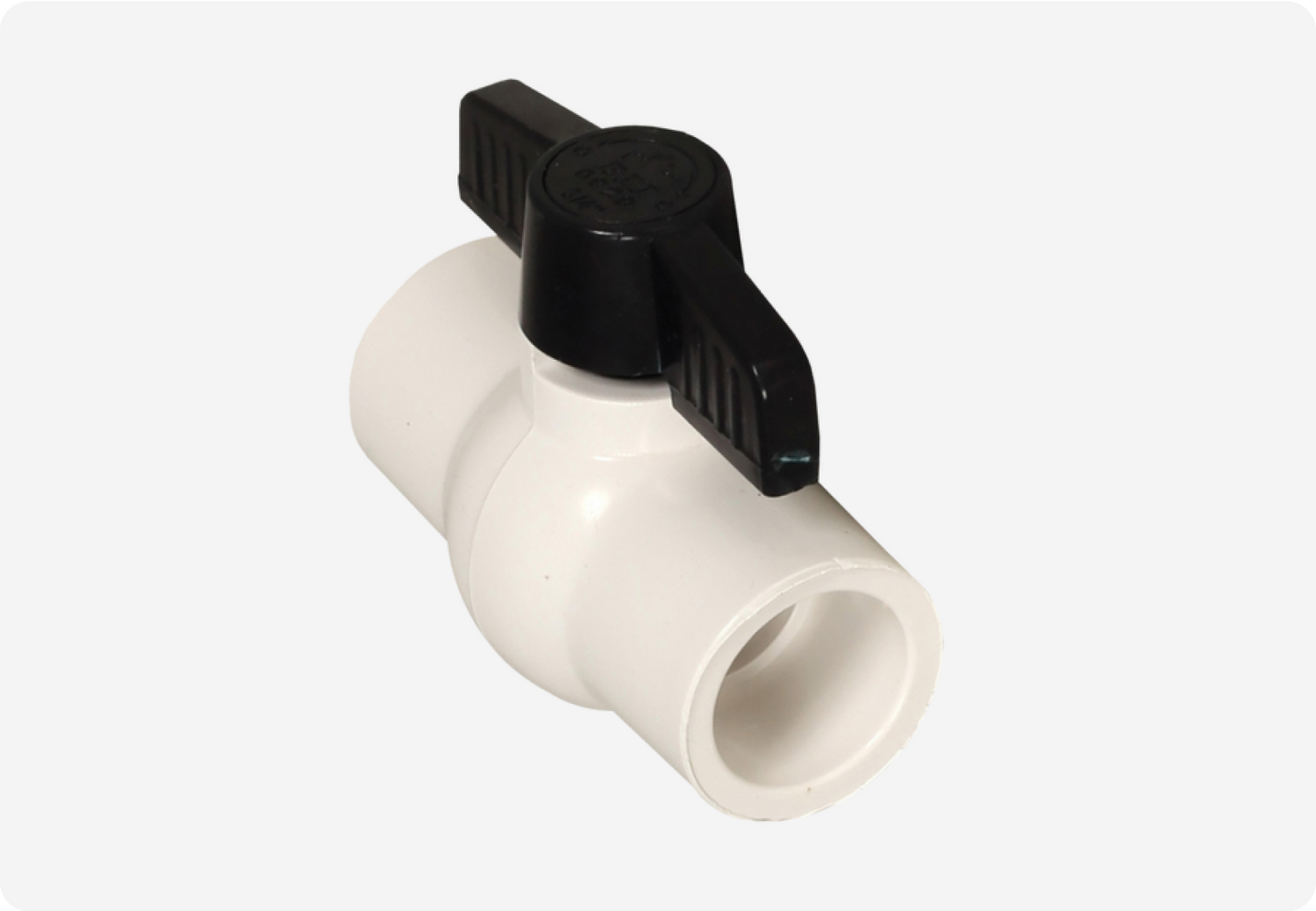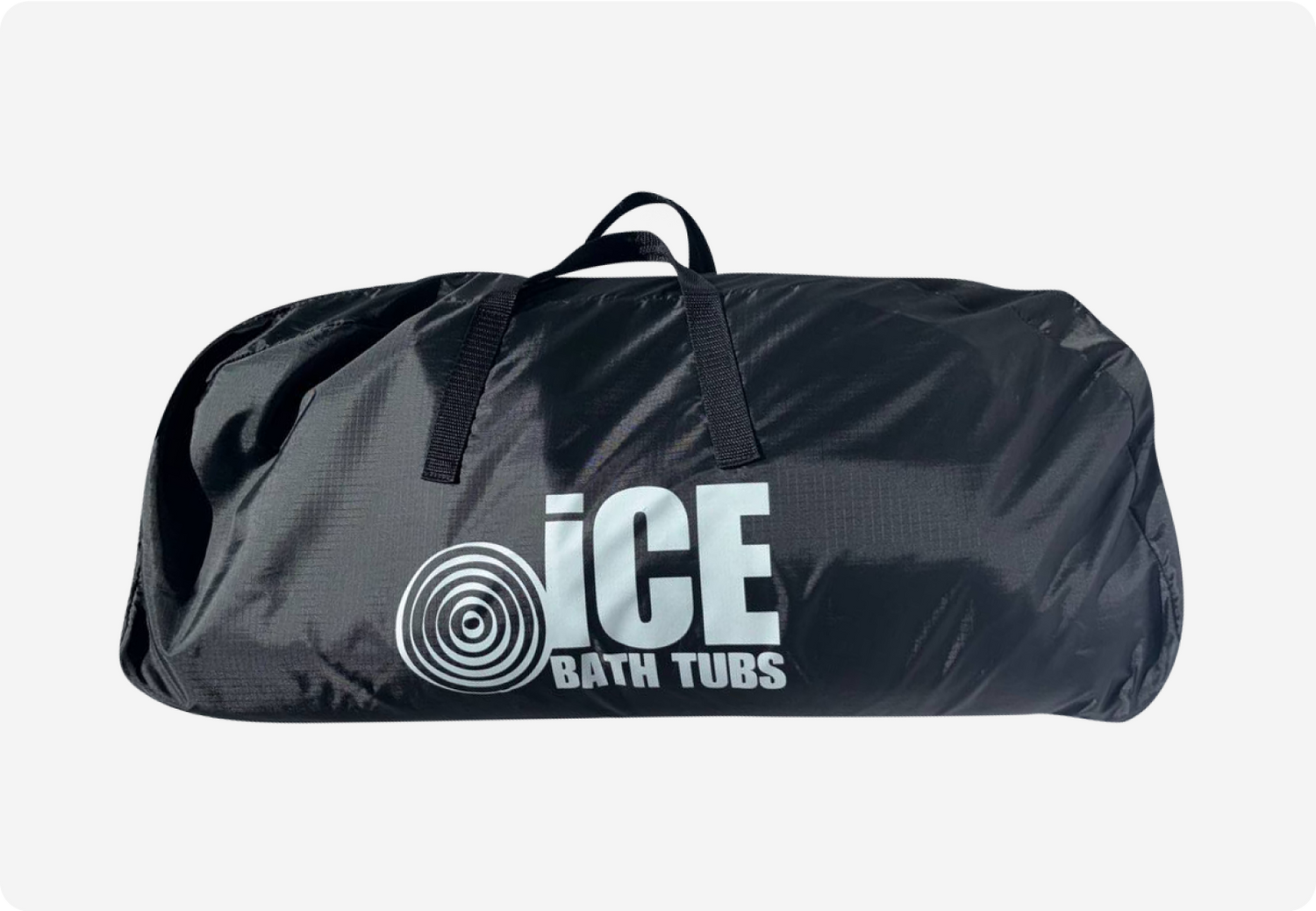
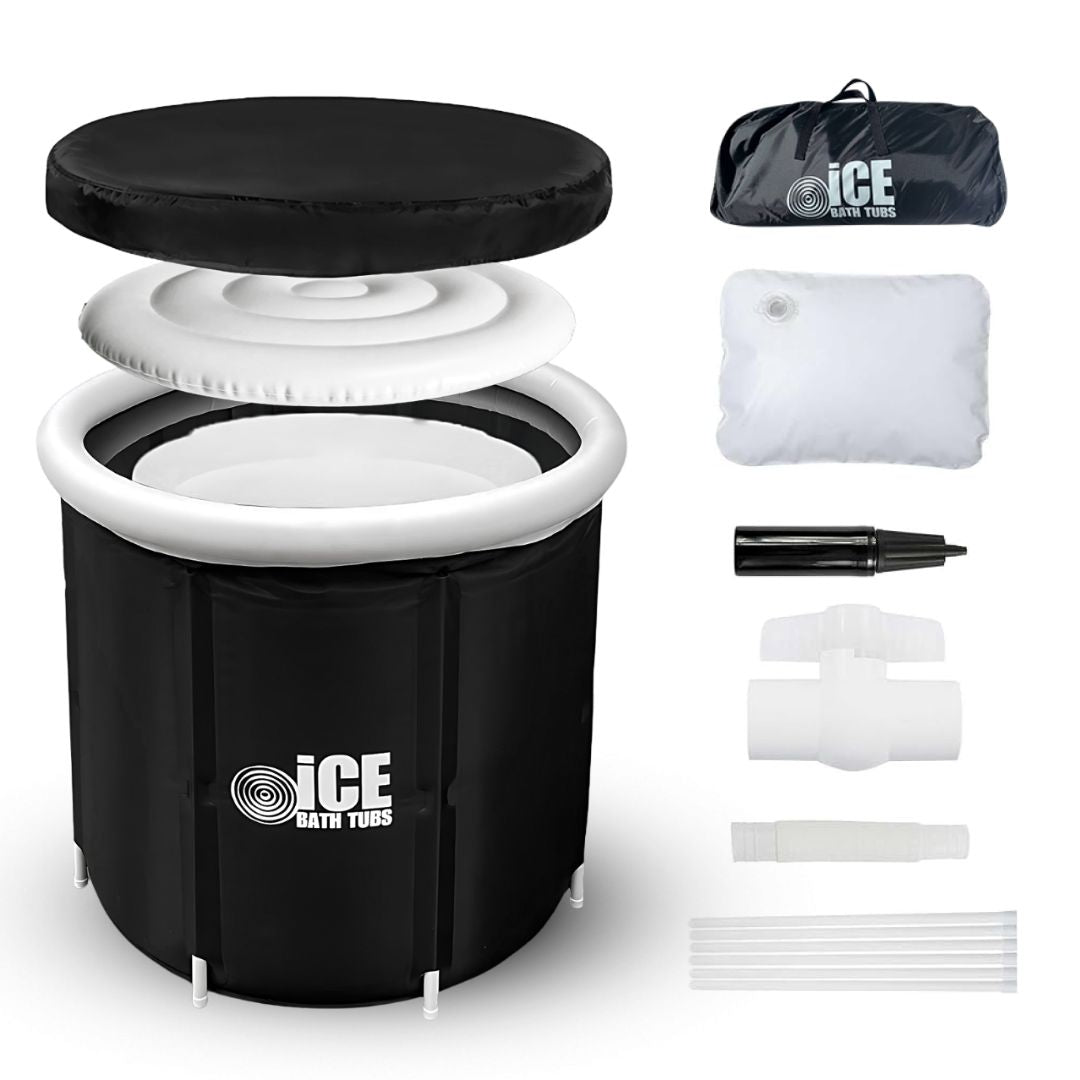
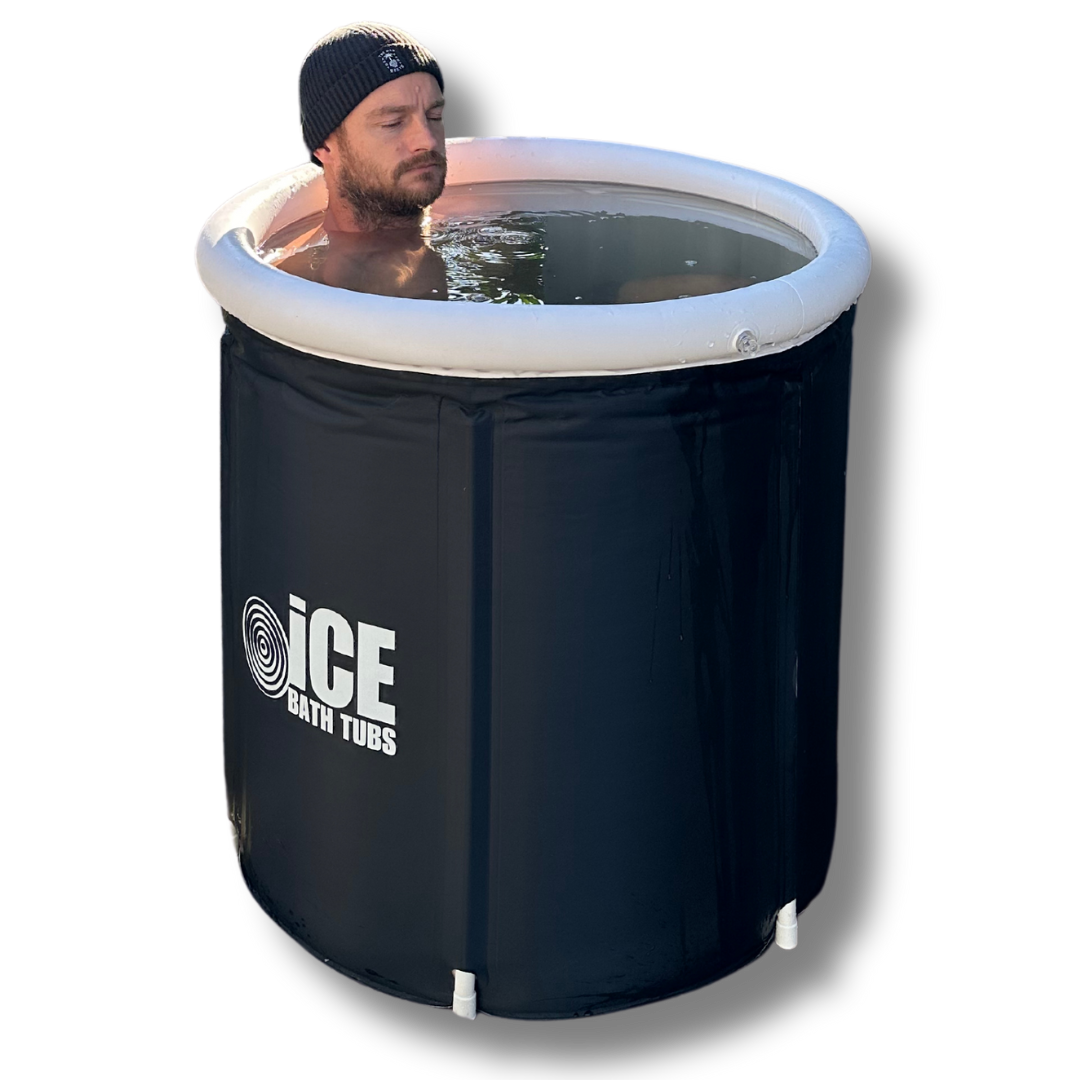
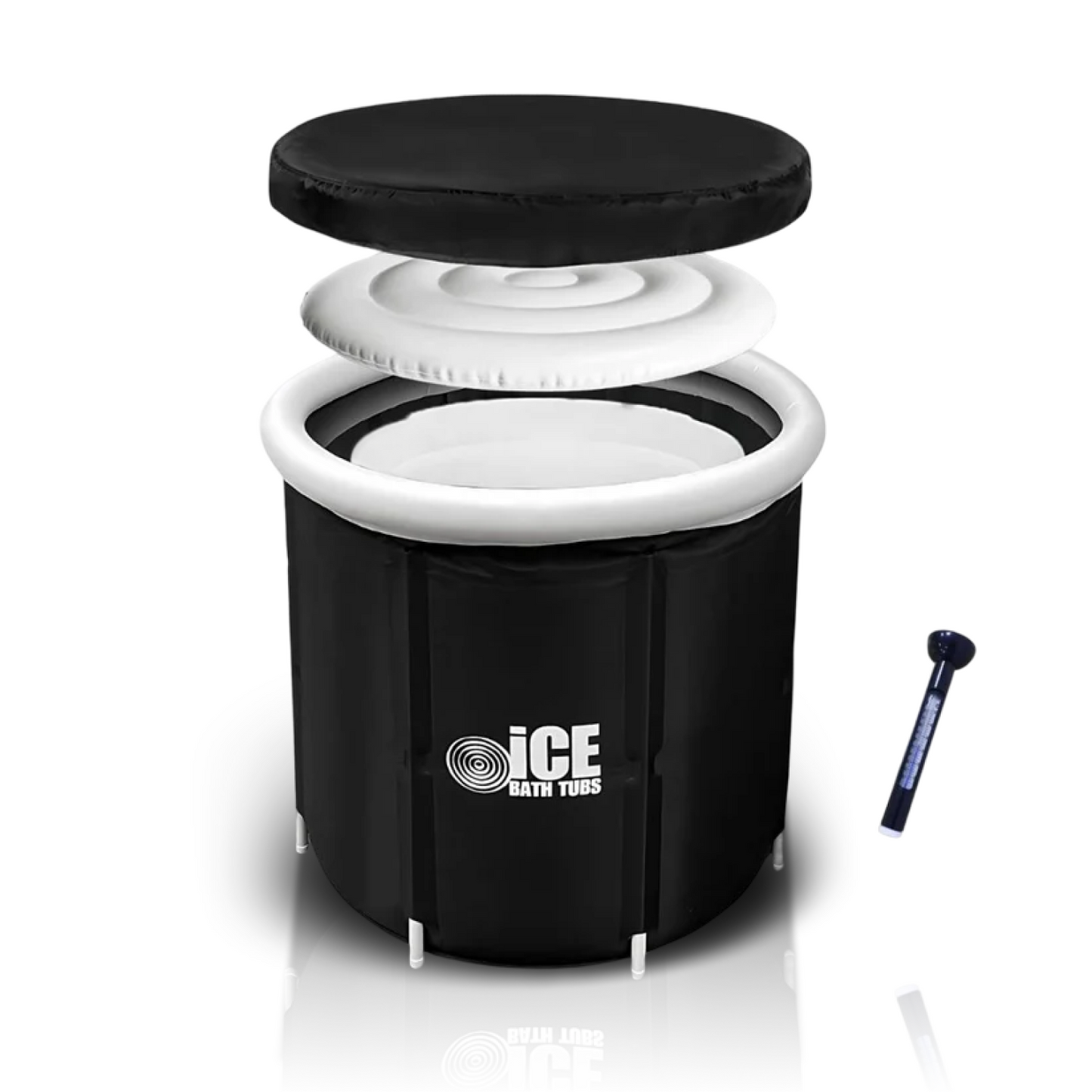
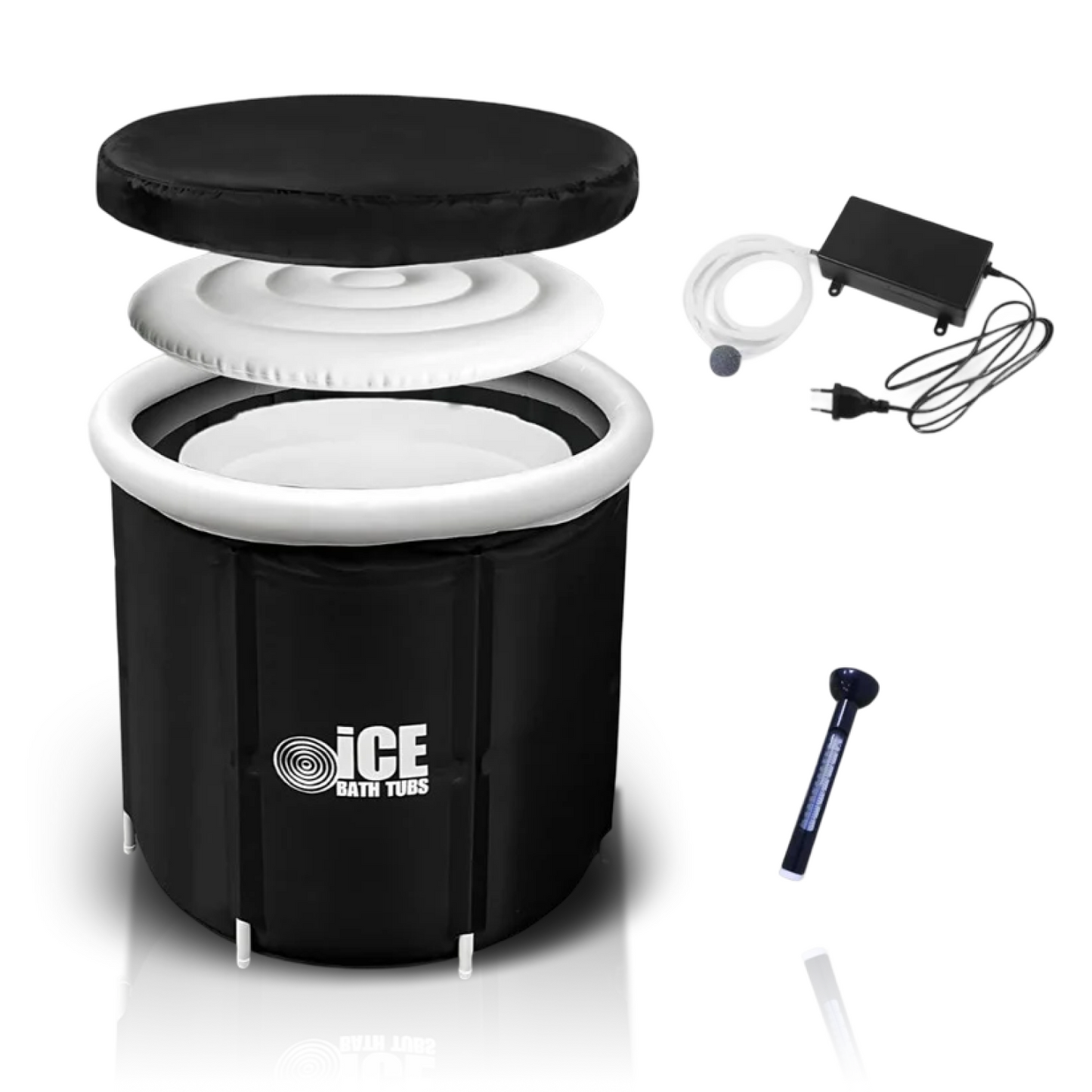
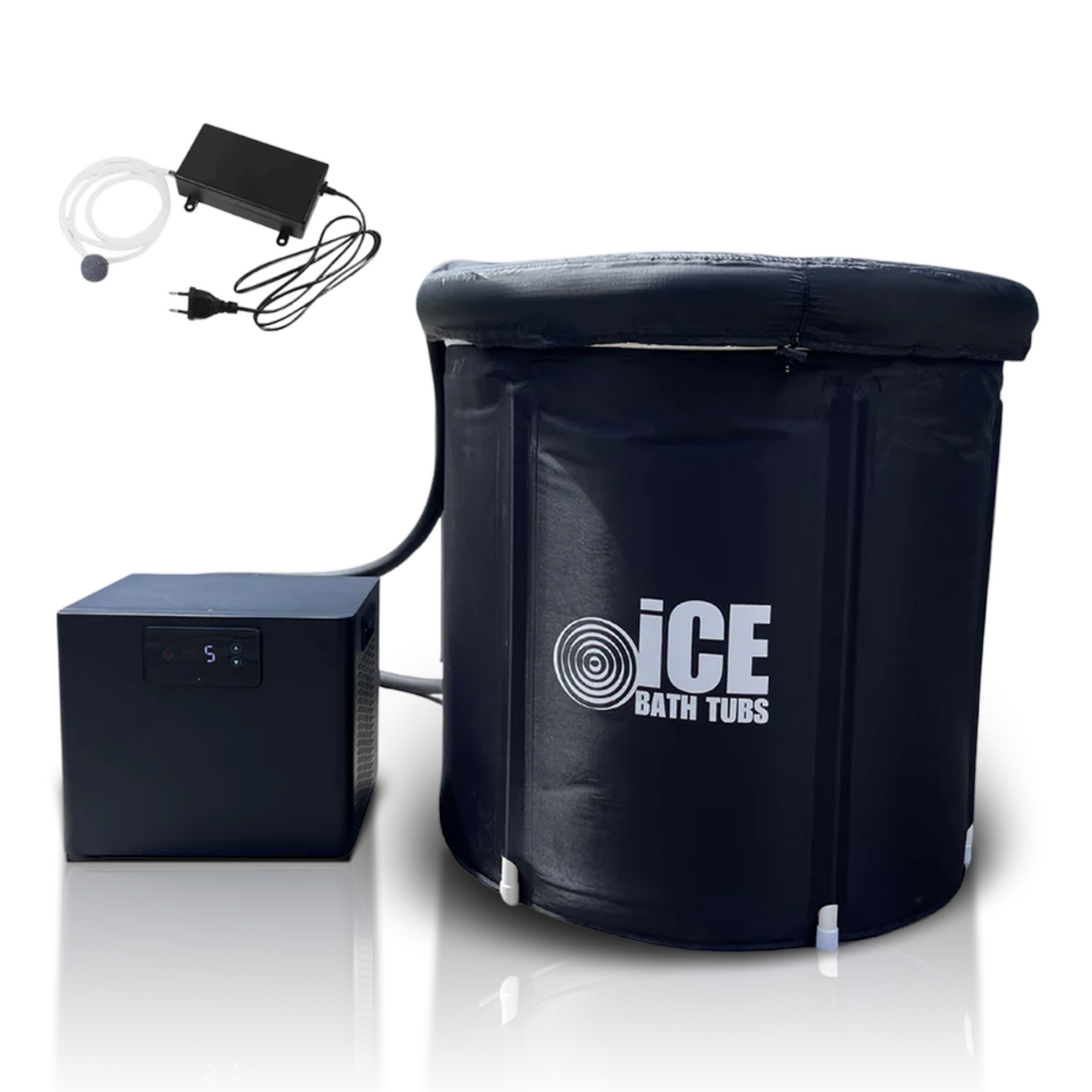
What Our Customers Are Saying
Why 1000's of NZ Customers Choose Our Portable Ice Bath

|
Other Brands | |||
| Overnight shipping in NZ |
|
|
||
| Thermal Lid + Protective Cover |
|
|
||
| 5-Layer Thermo-insulated Materials |
|
|
||
| Easy Drainage System |
|
|
||
| Portable & Compact |
|
|
||
| Padded Floor |
|
|
||
Engineered for Convenience and Portability
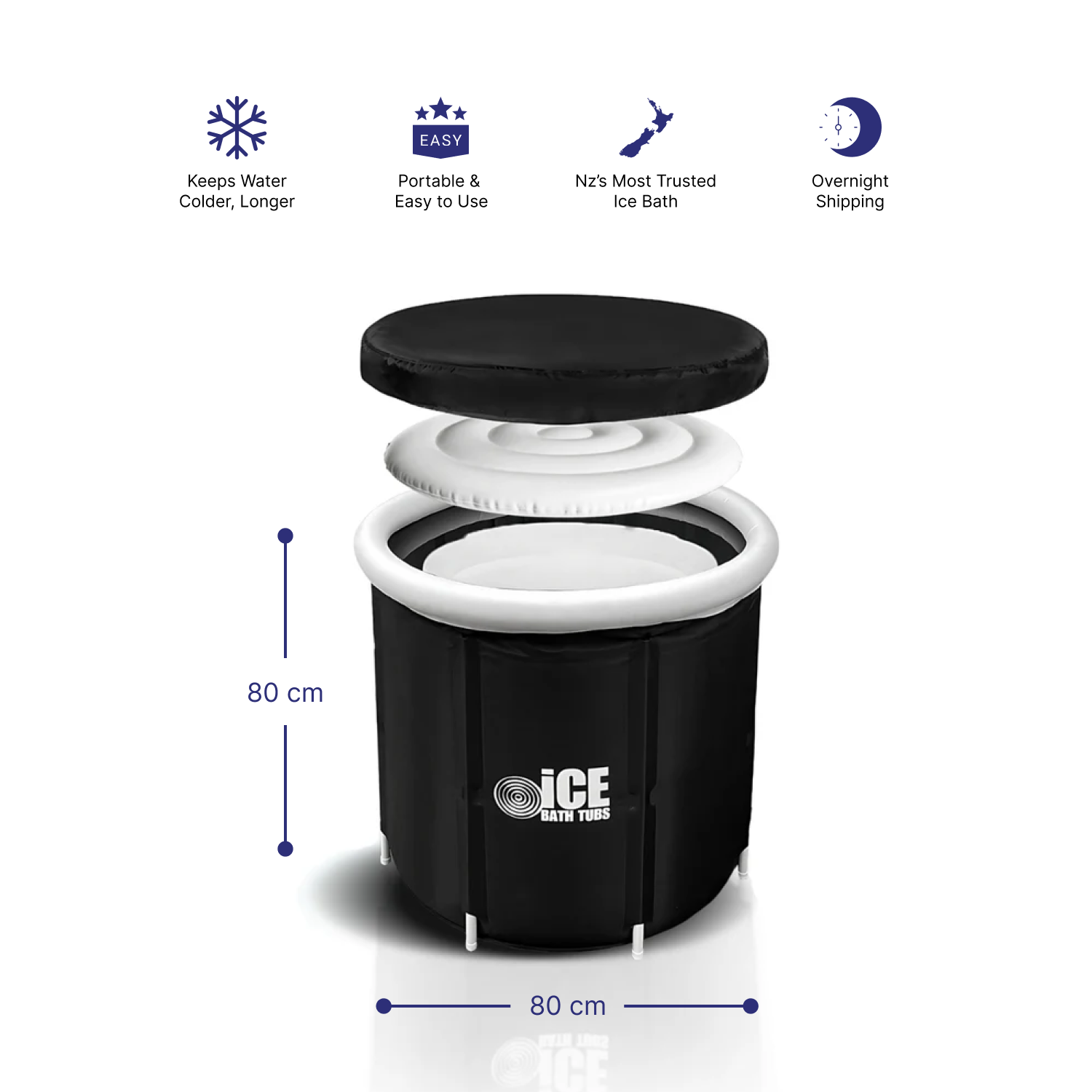
FAQs
Do I need to use ice?
The temperature of an ice bath typically ranges between 10 to 15 degrees Celsius. Depending on your local climate you may find that your water is a desirable temperature without the use of ice. During certain times of the year this is certainly the case for a lot areas in New Zealand. Over time as you get used to cold water therapy you may desire a cooler water temperature and therefore use ice more often. For more on taking an ice bath check out our guide on how to take an ice bath.
Can I use regular ice or ice packs?
You can use regular ice or ice packs, depending on your preferences.
Regular Ice: You can add ice from your refrigerator's ice maker or use ice bags from the store. Regular ice is readily available and cost-effective.
Ice Packs: Ice packs or frozen bottles of water maintain their frozen state for a longer duration than regular ice, which can be beneficial if you want extended cool temperatures without the hassle of adding more ice.
When deciding whether to use regular ice or ice packs in your portable ice bath, consider the following:
Duration of Use: If you plan on shorter sessions, regular ice may suffice. For longer or multiple sessions, ice packs may be more convenient.
Convenience: Ice packs can be stored in the freezer and used immediately, whereas regular ice may need some preparation.
Ultimately, the choice depends on your specific needs. Many users find that a combination of both can provide versatility for different situations, allowing them to adapt their cooling experience as needed.
How do I set my portable ice bath up?
Step 1: Unpack
Step 2: Insert Legs
Step 3: Inflate
Step 4: Rinse
Step 5: Position on a Level Surface
Step 6: Fill With Cold Water
Step 7: Test Water Temperature
If you're not feeling the arctic tingle, toss in some ice to level up the chill factor.
For more on taking an ice bath check out our guide on how to take an ice bath.
How do I clean my portable ice bath?
We recommend using a cleaning product (for example, spray bottle mixture of one part white vinegar to one part water) to keep your ice bath clean. Wipe out the inside of your portable ice bath and the thermal lid whenever you change the water.
Please don’t use any corrosive detergents on your portable ice bath.
How can I keep the water cleaner for longer?
- Wear swimwear
- Shower before entering the water
- Avoid introducing moisturisers, lotions, oils, or the like into the water
- Add a spa sponge to the water to eliminate surface oils
- Place the lid back on straight after each use to minimise dirt and particles entering the water
You will have to change the water in your portable ice bath regularly. Most people change the water every week.
Don't leave your ice bath full of water for extended periods. If you're not going to be using it for a while, drain and clean it thoroughly.
Using Hydrogen Peroxide to Deep Clean Your Portable Ice Bath
Why should I use hydrogen peroxide to clean my portable ice bath?
Hydrogen peroxide is a natural disinfectant that kills bacteria, mold, and algae. Using a diluted solution helps break down organic buildup, keeping your ice bath cleaner for longer.
What concentration of hydrogen peroxide should I use?
A 3% to 6% hydrogen peroxide solution is safe and effective for cleaning. You can mix it with water in a spray bottle for easy application.
How do I make the cleaning solution?
- For a 3% solution: Use 3% hydrogen peroxide straight from the bottle (no dilution needed). You can find 3% hydrogen peroxide at most pharmacies, supermarkets, or online.
- For a stronger clean (up to 6%): Mix equal parts hydrogen peroxide and water (e.g., 1 cup hydrogen peroxide + 1 cup water) to dilute the hydrogen peroxide by half. For example if you purchased 12% hydrogen peroxide, diluting with an equal part of water will dilute it to 6%.
How do I clean my ice bath and thermal lid with hydrogen peroxide?
- Empty the ice bath and remove any debris.
- Spray the hydrogen peroxide solution generously on the interior surfaces, including the thermal lid.
- Let it sit for a few minutes to break down algae, bacteria, and grime.
- Scrub with a soft brush or sponge to remove any remaining buildup.
- Rinse thoroughly with clean water before refilling.
How often should I deep clean my ice bath with hydrogen peroxide?
- Weekly: For regular maintenance.
- After heavy use or visible buildup: If you notice algae, slime, or discoloration.
Is hydrogen peroxide safe for my ice bath materials?
Yes, hydrogen peroxide is safe for PVC materials used in portable ice baths. Always rinse well after cleaning.
Will hydrogen peroxide affect the water quality?
No, once rinsed, it breaks down into water and oxygen, leaving no harmful residues.
Where can I buy hydrogen peroxide?
You can find 3% hydrogen peroxide at most pharmacies, supermarkets, or online.
By following these steps, your portable ice bath will stay cleaner, fresher, and free from harmful buildup!
Are there any specific contraindications to using an ice bath?
Using a portable ice bath, like any cold therapy method, has both benefits and potential risks. It's important to be aware of specific health conditions or contraindications that may make using a portable ice bath inadvisable or require consultation with a healthcare professional.
Here are some health conditions and contraindications to consider:
Hypothermia: Individuals who are sensitive to cold temperatures or who have a history of hypothermia should use ice baths with caution.
Raynaud's Disease: People with Raynaud's disease may experience extreme sensitivity to cold. They should consult a healthcare provider before using an ice bath.
Cardiovascular Conditions: Individuals with heart conditions, such as heart disease, hypertension (high blood pressure), or arrhythmias, should consult their healthcare provider before using an ice bath. Cold exposure can temporarily increase blood pressure and heart rate.
Respiratory Conditions: Those with respiratory conditions like asthma may find cold exposure uncomfortable and potentially trigger symptoms.
Circulatory Issues: People with poor circulation or peripheral vascular disease may be more susceptible to cold-related injuries when using an ice bath.
Open Wounds or Infections: Avoid using an ice bath if you have considerable open wounds or skin infections, as cold water can slow down the healing process.
Neurological Conditions: Individuals with certain neurological conditions, such as neuropathy (characterised by weakness, numbness, and pain, often in the hands and feet), may have reduced sensitivity to temperature changes.
Pregnancy and Postpartum: Pregnant and breastfeeding women should seek guidance from their healthcare provider before using an ice bath, as extreme cold can affect blood flow.
Age: Children and the elderly may have a higher risk of adverse reactions to cold exposure, so caution is advised, and supervision is necessary.
Medications: Some medications can affect an individual's ability to regulate body temperature or respond to cold. If you're taking medication, consult your healthcare provider before using an ice bath.
It's crucial for individuals with any underlying medical conditions or concerns to consult with a healthcare professional before incorporating ice baths into their routine. Additionally, always follow safety guidelines and recommended exposure times when using a portable ice bath to minimise the risk of adverse effects.

